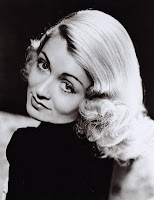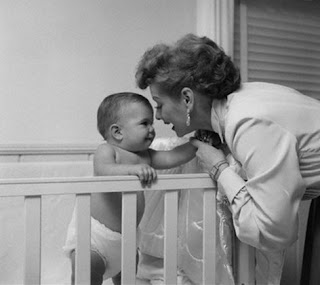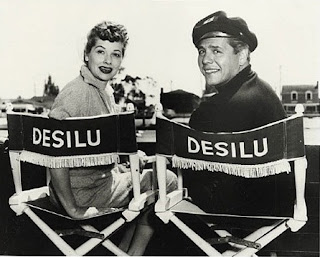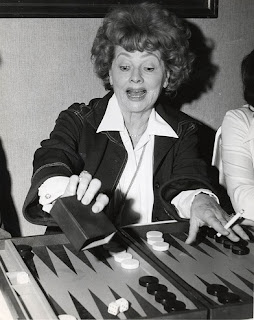
Starring Loretta Young, Cary Grant, Jackie Kelk, Henry Travers & Marion Burns
Directed by Lowell Sherman
Produced by Darryl F. Zanuck
Twentieth Century Pictures
Born to Be Bad is a movie that sounds more interesting than it actually is. The racy plot presents Loretta Young in an atypical role as a bad girl and newcomer Cary Grant before he established his famous on-screen persona. The premise sounds intriguing but, ultimately, the movie fails to deliver anything worthwhile.
Loretta Young plays Letty Strong, a beautiful woman hardened by the harsh realities of life. In the opening scene, Letty is presented as glamorous and sophisticated while standing at the bar in a posh New York nightclub, surrounded by a group of admiring men and commanding the attention of practically everyone else in the room. However, behind this beguiling façade, Letty is really just a mess. She was a teenage mother and is now raising her young son (Jackie Kelk) on her own. As a result of this painful experience, the cynical Letty is determined that her son will be prepared for a cold and unforgiving world. She’s not only greedy and manipulative but also completely indifferent to the fact that her lax parenting has made her son a troublesome neighborhood hooligan. She loses custody of him and is heartbroken when he goes to live with wealthy businessman Malcolm Trevor (Cary Grant). Malcolm and his staid wife (Marion Burns) give Jackie a stable and supportive home for the first time. Letty schemes to get her child back but things are complicated when she and Malcolm fall in love.
Born to Be Bad ran into several problems during production due to its racy subject matter. The Hays Office, which was keeping a sharp eye on depictions of immoraliy on the screen, rejected the film twice and demanded any references to Letty earning a living as a prostitute be removed. Several of the film’s early scenes also had to be edited and reshot in order to appease the censors. In particular, the Hays Office objected to various shots of Young sitting on the floor in a nightgown with her legs opened, wrestling with her son, and appearing in various states of undress. The edits were done with a heavy hand and, as a result, the first half of the movie is a choppy mess. Director Lowell Sherman’s uneven pacing doesn’t help matters. The movie starts out on the wrong foot and never manages to find its stride. The running time is also curiously short. It’s only an hour long and the ending is very abrupt, giving the already far-fetched plot a decidedly unsatisfactory ending.

Despite these shortcomings, it’s still fascinating to watch Loretta Young play such an character. In real life, Young was an extremely devout Catholic who strived to only play “good characters” throughout her career. She was concerned with setting a good example for her fans so it’s unusual (and fun!) to see her play a bad girl. But she’s convincing.
Although the character has few redeeming qualities, Young renders her as sympathetically as possible. Her exterior is cold. She simply doesn’t care about right and wrong or the consequences of her actions. She’s only concerned with herself and has no problems lying, cheating and taking advantage of anyone until she gets what she wants. Of course, she looks beautiful doing it in some pretty Gwen Wakeling gowns. (The white number donned in the opening scene is especially nice.) But Loretta also manages to convey the fact that Letty is broken inside because of her struggles as an unwed mother. She’s a sad, broken woman who is simply looking for love and stability in spite of her bitterness at the hand life has dealt her.
My favorite part of the movie is the great chemistry between Loretta and Cary Grant. Grant had only been in Hollywood for a couple of years when he made this movie and had yet to forge an identity of his own. His character is bland and could’ve been played by any other handsome actor in Hollywood. Grant is given little to do besides wear a nicely tailored suit and react to Letty’s provocations. He’s also saddled with some pretty impossible dialogue. In one scene, he admonishes Loretta: “Oh, you’re bad. Bad all the way through. You’re just a beautiful bad girl!”

Corny dialogue aside, there’s a palpable sexual tension between the two stars. Although Malcolm is wary of Letty and tries to resist her very obvious advances, he is constantly betrayed by his body language. When they’re alone together, he always seems to be closing in on her, slowly but surely moving into her personal space until he finally can take no more and gives in to temptation. Their kisses are passionate and intense. Grant and Young would star in another movie together, the holiday classic The Bishop’s Wife (1947). This second pairing would prove to be much more successful than the first.
Although it’s an insignificant film overall, Born to Be Bad is probably more interesting for modern viewers because it happened to foreshadow events that would occur in Loretta Young’s real life. In early 1935, less than a year after this movie was released, she would find herself unmarried and pregnant. The unexpected pregnancy and subsequent birth of her daughter was kept a closely-guarded secret for many years.
Born to Be Bad is not currently available on DVD but it has been shown on TCM.



























